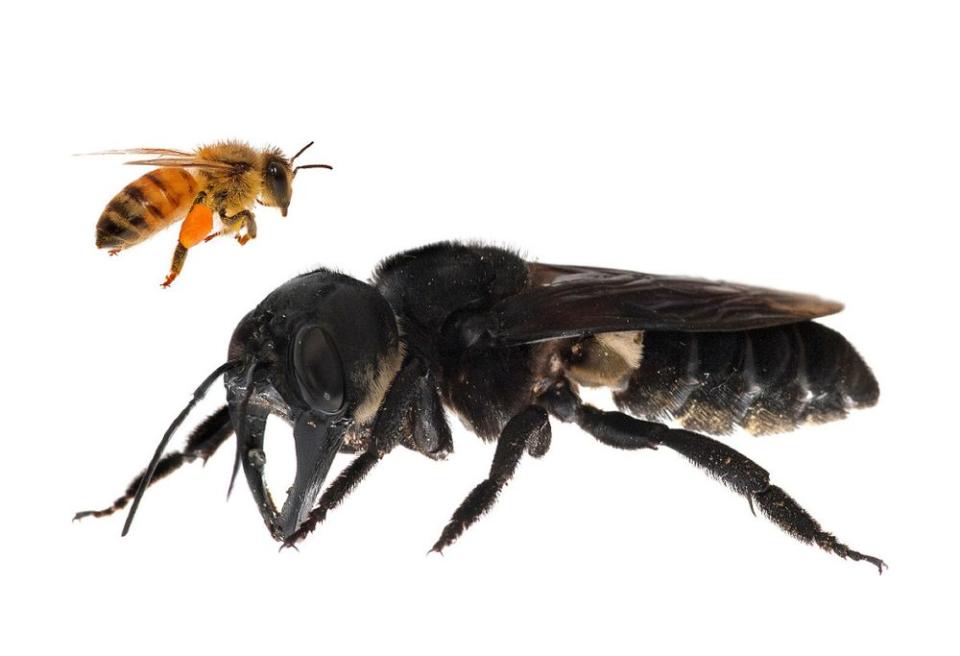World's Largest Bee with Giant Jaws Rediscovered in the Wild After Nearly 4 Decades

If you thought regular-sized insects were scary, you’re in for an unbeelievably rude awakening.
Behold Wallace’s giant bee — the world’s largest bee that recently reemerged after last being spotted in the wild during the 1980s, according to Newsweek.
The massive insect, which is approximately four times bigger than the European honeybee, has an estimated wingspan of 2.5 inches and terrifying jaws — similar to a beetle’s — that help the bug gather wood and resin for its nest, the outlet said.
Although it was first discovered in Indonesia more than 160 years ago, the insect was last seen in 1981. For nearly four decades, scientists had believed it was lost to science — or perhaps, even extinct — until its rediscovery on January 25, CNN reported.

More than 160 years ago, British naturalist Alfred Russel Wallace was exploring the Indonesian island of Bacan on the last day of his expedition trip in 1858 when he discovered the insect, described as a “large black wasp-like insect, with immense jaws like a stag-beetle,” Newsweek said.
Although the bug was eventually named after him, it wasn’t seen again until 1981 by American entomologist Adam Messer, according to Newsweek.
RELATED: Woman In Critical Condition After Being Stung Over 200 Times by Africanized Bees
As Messer spotted the insect in the Indonesian islands, he made note of its behaviors, including its tendency to build nests inside termite mounds, before it had officially disappeared yet again, the outlet said.
The most recent find came under the leadership of natural history photographer Clay Bolt, entomologist Eli Wyman, behavioral ecologist Simon Robson, and ornithologist Glenn Chilton, CNN said.
Together, the team spent years searching for the insect until finally coming across the giant female bee inside of a termite nest this past January.
RELATED VIDEO: Bees Added to The Endangered Species List For the First Time In The U.S.
“It was absolutely breathtaking to see this ‘flying bulldog’ of an insect that we weren’t sure existed anymore, to have real proof right there in front of us in the wild,” Bolt told Newsweek. “To actually see how beautiful and big the species is in life, to hear the sound of its giant wings thrumming as it flew past my head, was just incredible.”
Despite its terrifying size, Bolt told Newsweek that female bees do not tend to sting and this particular one did not show any signs of aggression towards his team.
Bolt and Robson did not immediately respond to PEOPLE’s request for comment.
RELATED: 81-Year-Old Texas Man Survives After Being Stung by Nearly 1,000 Bees: ‘It Was so Painful’
The bee is currently listed as “vulnerable” on the International Union for Conservation of Nature due to threats from mining and quarrying.
Moving forward, the researchers plan to learn more about the bee and raise more awareness, especially in the Indonesian islands, to prevent it from going extinct — something they said they were optimistic for.
“There’s still a lot of forest and there’s time and good hope for the bee and its survival,” Robson told CNN.

